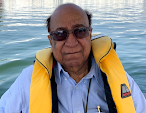Many of us who had spent decades working in AI and educational technology are extraordinarily fortunate to be alive and well at this time. We had committed to these technologies, although we knew they were unlikely to make progress in the short term. The Knowledge-Based Computer Systems team (KBCS) at the National Centre for Software Development and Computing Techniques (NCSDCT) had bet on AI and educational technology (ET) forty or fifty years ago. AI and ET sounded like science fiction to most people in those days. Today, they are among the leading technologies of the day.
It has not been a question of making the right choice and waiting for it to materialize. Team members have worked with a commitment to AI all these years. We had written a proposal for a Knowledge-Based Computer Systems project in 1983-84. The government responded by launching a major project in 1985, which involved several national institutions and secured the support of the United Nations Development Programme. Of course, NCSDCT’s KBCS team had a very significant role in the project.
Meanwhile, a number of us who had worked as members of the NCSDCT team had created an independent institution named the National Centre for Software Technology in 1985, with the full support of TIFR. Sasikumar was a member of the first batch of professionals who joined NCST directly.
Sasi’s lifelong work is recorded in the papers by him and his co-authors. You can find them on Google Scholar (Sasikumar M - Google Scholar ) and on ResearchGate (Sasikumar Mukundan). The number of co-authors, the number of topics, and the sustained focus on technology are all there for you to see. I am glad that all this is well-recorded, preserved, referred to, and continues to influence people. His videos on his YouTube channel (https://www.youtube.com/@SasikumarMthelittlesasi/videos) provides additional information about his work .
This detailed recording of one's life's work through the Internet had not been available in earlier times. For instance, some of the earlier work of our Guru, Prof. Narasimhan, is not on the Internet. He had headed NCSDCT and gave us complete freedom and support to pursue our interests.
The NCST team launched the first in a series of international conferences, which soon became an annual KBCS conference. Sasi has a YouTube video (Running an affordable quality-conference -- the KBCS experience ) describing the incredible experience this was. Of course, he played an important role in these conferences.
These conferences allowed us to bring leading researchers to India and to invite hundreds of Indian researchers. All of them presented their research work, and the NCST team edited and had them published internationally—that involved enormous amounts of editorial effort. There were times when the team worked right through the night and rushed directly to the airport at 5:30 in the morning to send the manuscript to the publishers!
The effort required to solve certain types of problems grows unavoidably exponentially as you try to apply the solution to bigger and bigger systems. Sashi’s MSc (Engg) thesis submitted to the IISc begins by showing that this is the case for scheduling planes efficiently for an airline. If he had worked abroad, Sasi’s work on airline scheduling would have led him to launch a startup and build a large company across multiple countries. It went off very well in India as well, as Air India picked up the idea and sponsored the KBCS team to develop relevant software.
This led to the scheduling of oil tankers to deliver crude oil to Indian refineries, sponsored by the Oil Coordination Committee, and later the scheduling of oil pipelines. The paper describing our pipeline-scheduling work has Sasi as the first author, showing his key role in the effort. It is a widely recognized piece of work.
A book on Expert Systems, produced by five members of the KBCS team, again has Sasikumar as the first author, recognizing his key role. Sasi had the energy to collate the manuscript of this book and put it in the public domain decades after the hardcopy version was published. The book received worldwide visibility. Every week now I receive notifications stating that someone has published an article in which this book is listed among the references.
In 2003, the Government of India merged NCST with the Centre for Development of Advanced Computing. It is now known as CDAC, Mumbai. Sasi has continued to make significant contributions within CDAC, and particularly at CDAC, Mumbai. His leadership at CDAC, Mumbai, has been highly valuable.
NCST’s work on a nationwide public testing system, using advanced techniques to create questions, grade, and analyze answers, is well known. The whole NCST worked together to run and develop it over the years. Sasi had his heart in it and had contributed to it from the beginning. Over the last two decades, this technology has played its most significant role through projects at CDAC Mumbai. Through multiple projects, it has served students at several levels and has served millions. Only the other day, a principal told me that he had acquired the CDAC Mumbai system for use by every student of his institution.
AI-based systems use the best algorithms and heuristics they can find on the Internet to solve problems and to create optimal plans for activities. As a result, researchers find that their published work lives on.
The AI revolution owes a great deal to powerful hardware that utilizes highly parallel computing involving many CPUs. Sasi had worked on this in the last century and has published his results.
Srinivasan Ramani
Hindi Editor: Mohan Rohra
A Hindi version of this article is at हिंदी में स्टेम (STEM): ससिकुमार मुकुंदन ने कार्यकारी निदेशक, "सी-डैक, मुंबई" के पद से सेवानिवृत्ति ली




